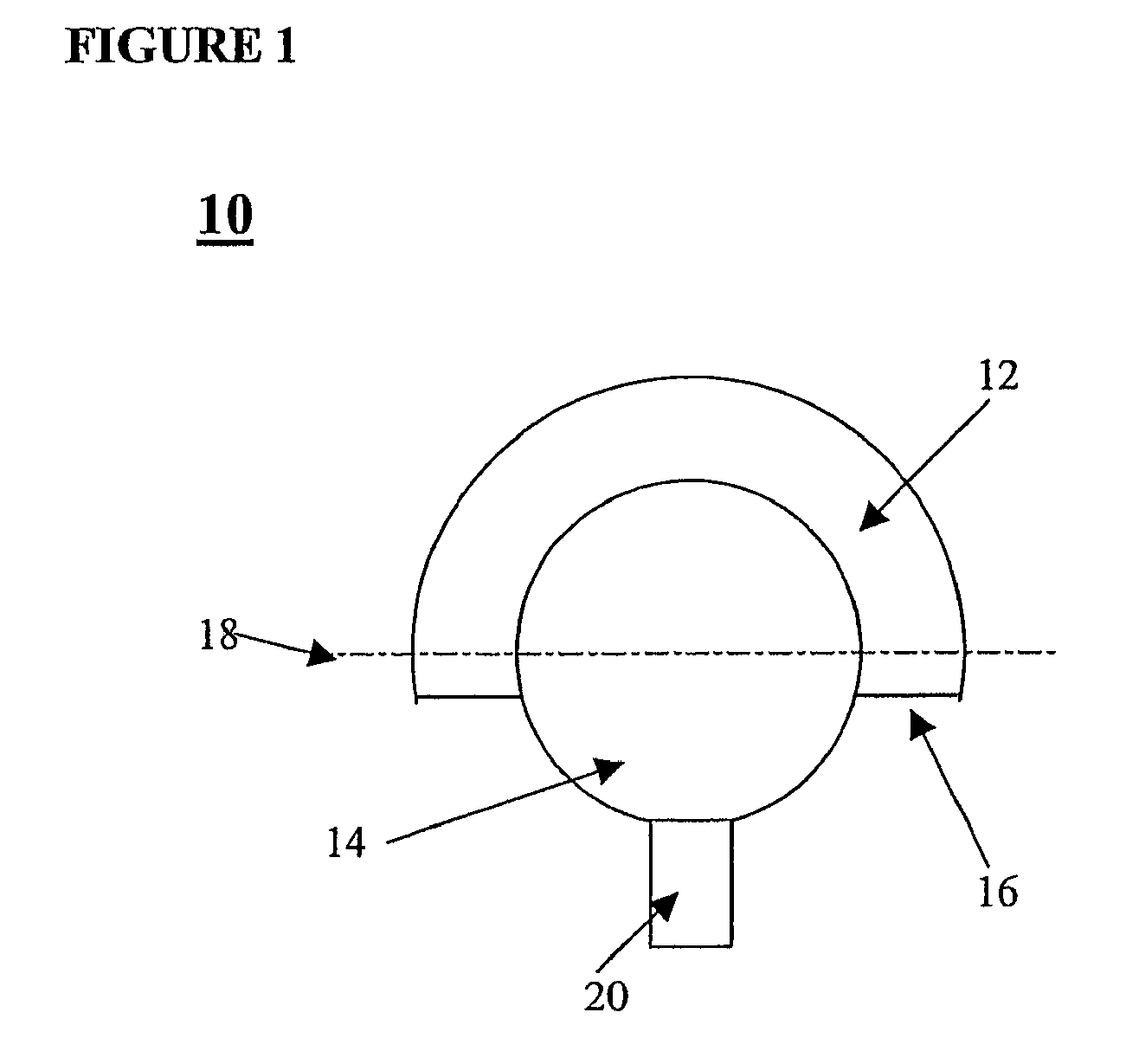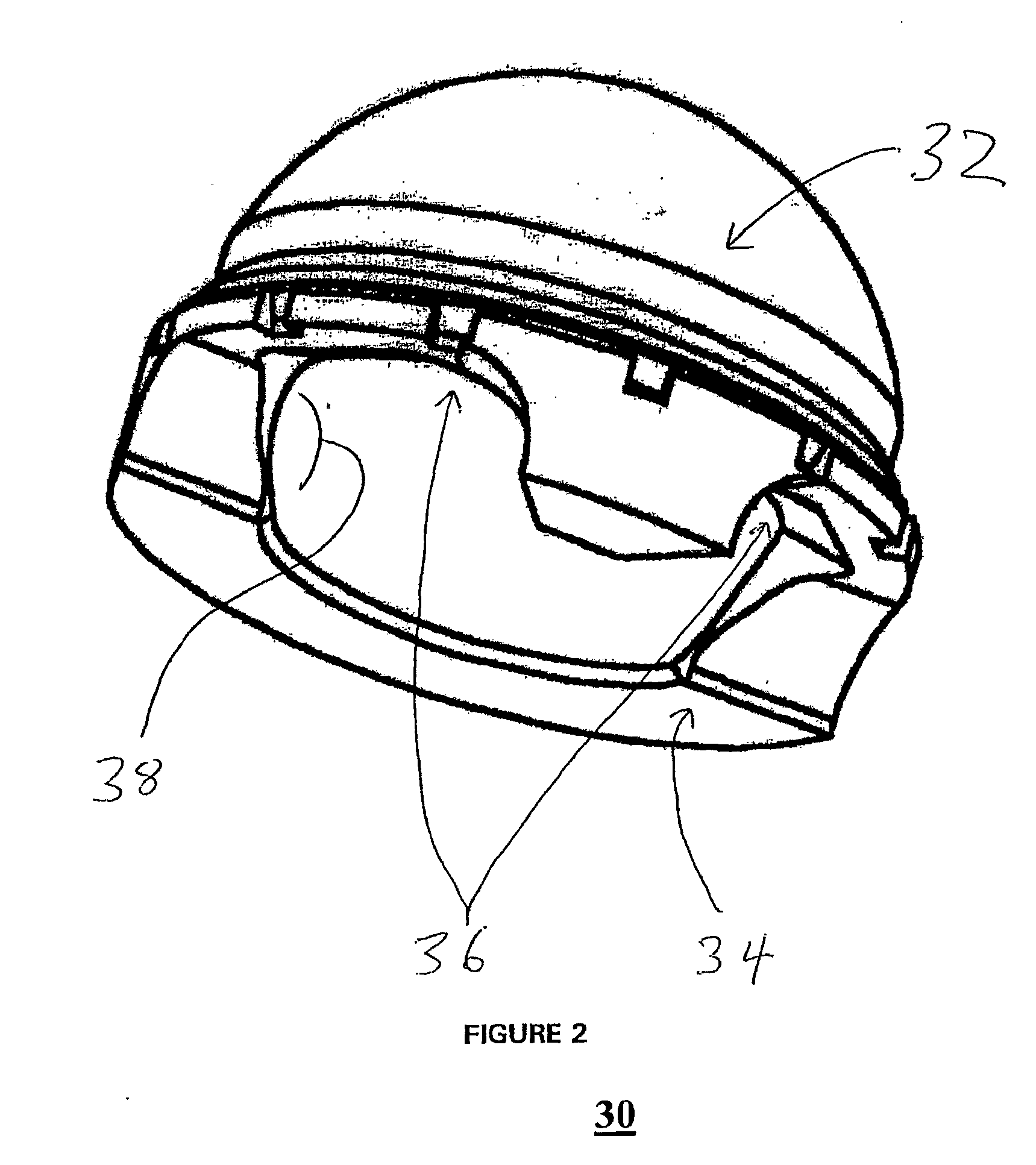Acetabular components that decrease risks of dislocation
a technology of acetabular components and risk reduction, applied in the field of acetabular components, can solve the problems of significant patient anxiety, significant surgical management costs, and source of morbidity, and achieve the effects of reducing the rate of dislocation, increasing the inherent stability of the head-liner, and increasing the range of motion
- Summary
- Abstract
- Description
- Claims
- Application Information
AI Technical Summary
Benefits of technology
Problems solved by technology
Method used
Image
Examples
example 1
[0064] The load required for insertion and dislocation of femoral heads in a constrained liner according to the invention was quantified by inserting 32 and 38 mm heads into simulated liners of electron beam crosslinked UHMWPE. Two and three dimensional modeling was performed to assess ROM and stability in vitro. The liner had no chamfer.
[0065] The ROM, and the loads required for insertion and dislocation using different opening diameters for 32 mm and 38 mm heads in simulated monopolar liners were measured. A 32 mm head with a 31 mm liner opening required 60 lbs. for insertion and 55 lbs. for dislocation. When the opening was increased to 31.5 mm the forces for insertion and dislocation decreased to 29 lbs., and 24 lbs., respectively. Testing of 35.5 mm, 36.5 mm, and 37.5 mm openings with a 38 mm head was performed. The insertional loads were 157, 130, and 28 lbs. The force necessary to produce dislocation of the femoral head were 135, 126, and 28 lbs., respectively.
[0066] The RO...
PUM
| Property | Measurement | Unit |
|---|---|---|
| diameter | aaaaa | aaaaa |
| outer diameters | aaaaa | aaaaa |
| outer diameters | aaaaa | aaaaa |
Abstract
Description
Claims
Application Information
 Login to View More
Login to View More - R&D
- Intellectual Property
- Life Sciences
- Materials
- Tech Scout
- Unparalleled Data Quality
- Higher Quality Content
- 60% Fewer Hallucinations
Browse by: Latest US Patents, China's latest patents, Technical Efficacy Thesaurus, Application Domain, Technology Topic, Popular Technical Reports.
© 2025 PatSnap. All rights reserved.Legal|Privacy policy|Modern Slavery Act Transparency Statement|Sitemap|About US| Contact US: help@patsnap.com



